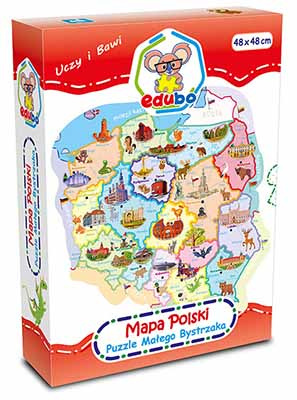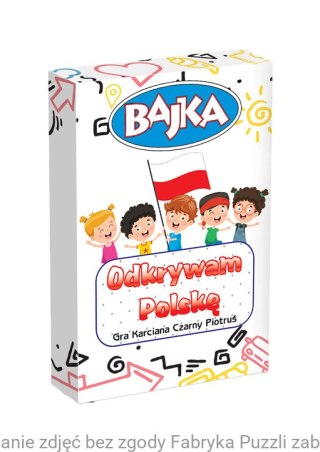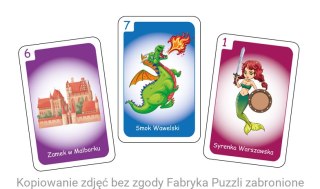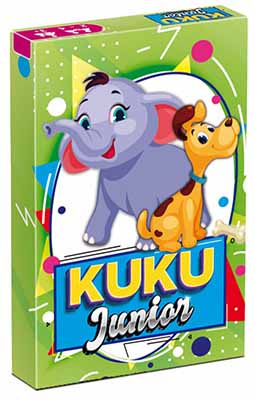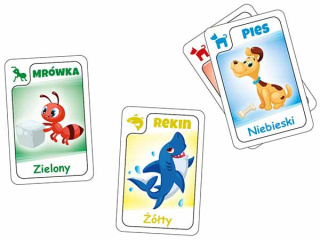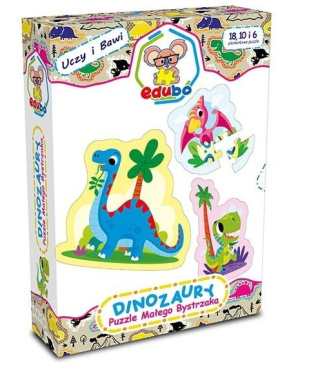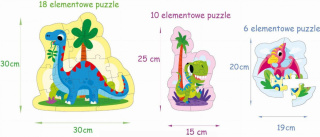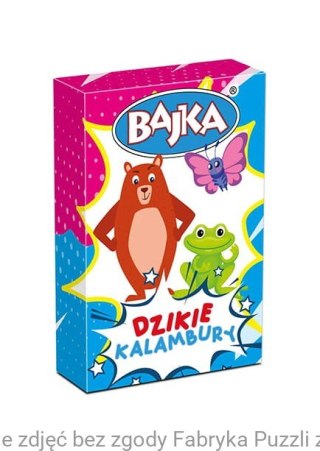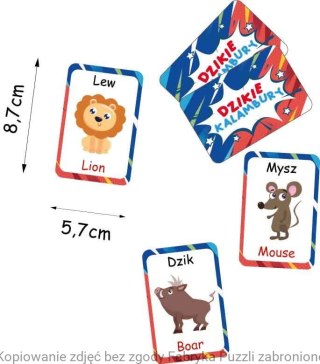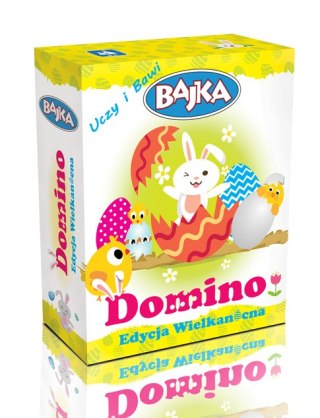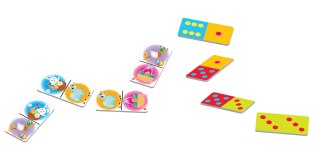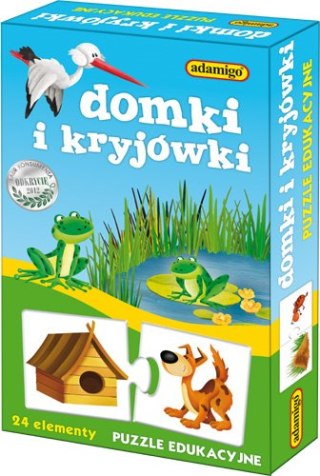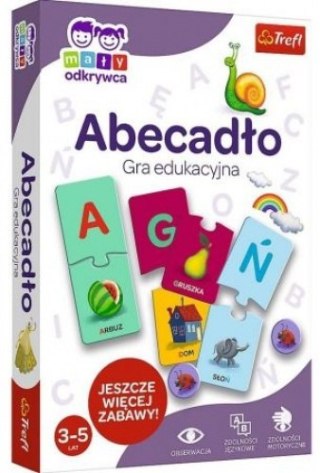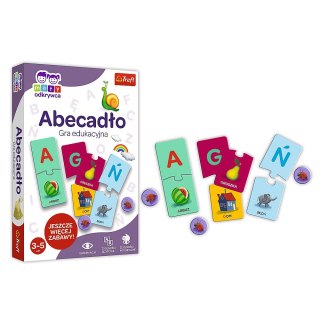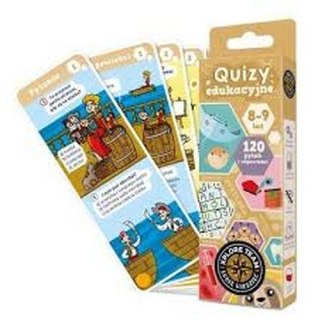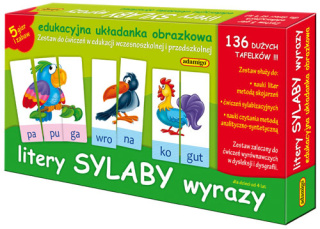Educational Games for 3-year-old Children - Awaken Curiosity and Creativity
Number of products : 54Educational game for 3 year olds
No one needs to be told how important a child's development is. Educational games perfectly combine learning and fun. Fun through learning brings the best results, which sometimes with We invite you to familiarize yourself with the offer of games designed for younger children. An educational game for a 3-year-old should encourage physical activity and social interaction. It should also support creativity, language development, mathematical and other skills.
The best board games
You want to play the best board games with your three-year-old. I understand that. You want them to have as much fun as possible, but you also don't want to sit and play Monopoly every night. That's why we've compiled a list of the best board games for this age group. Educational board games at which time was very fast on fun and positive emotions. The first board game will be a lot of fun, and the age of the players will not matter. A fun game has a mandatory point on every parent's to-do list.
As your little one gets older, they become more interested in learning. They will start asking questions about everything and everything - from why there are people in some countries who do not have enough food or how our bodies work when we eat different types of food (like chocolate) or exercise; Or what it means when someone says something is "amazing!"
These types of questions will guide you down many paths as parents: Do we answer their question honestly? How old should my child be before I start talking to them about sex? How to explain death without scaring him too much? These are all things that come up over time as children grow up, so if you find yourself at a standstill on a topic related to your child, check out our articles on parenting on our blog.
Memory game for 3 year old
Memory Game is one of the most popular educational games for three-year-olds. For young children, memory games are a great start to introduce you to the world of gaming. The playing time is not too long for the focus of a small player to be at a high level. In this simple game, the goal of the game is to have fun and the rules of the game can not be complicated.
Memory, despite its simplicity, is also suitable for older children. It helps develop hand-eye coordination, as well as concentration, visual perception skills, memory, and fine motor skills in a playful way. Many children like to have an activity at home to play during the long winter months when it is too cold to be outside. If you want your child to learn something while playing, try asking them questions about what they see on the cards. You can also use it as an opportunity to teach them how numbers work by counting each card as they place it in front of them.
Card game for 3 year old
Card games are a great way to teach young children numbers, colors, and shapes. Some card games, such as Black Peter or Kuku, are ideal for three-year-olds because they involve matching cards for a specific purpose (e.g. collecting cards or getting rid of pairs). Not one preschooler was difficult to tear away from the game :) Other games take a more creative approach, simply asking children to create their own rules as they play. For example, you can use animal picture cards to teach your child about different species. The sky is endless! Card games have been around since ancient times – and for good reason: They're easy to learn and fun for everyone involved! If you want to know new ideas for classic card games that will keep your child engaged and entertained, and at the same time teach him some valuable skills, read on!
Educational games
Memory games, cooperative games or educational games for preschoolers are aimed at attracting the child to a game that has a hidden message. Educational toys, thanks in the form of play, will bring valuable aspects of development for our child:
- Educational games are a great way for your child to learn.
- Thanks to educational games, the child can learn shapes, colors and numbers.
- Educational games can also help develop fine motor skills (small movements of fingers and hands) in children.
- Using educational games can also help develop gross motor skills (large arm and leg movements).
Choose simple games that allow your child to learn how to use their hands and mind at the same time. You can also choose simple games that require your child to use their hands and mind at the same time. This includes stacking or building blocks, finger painting, coloring pages, drawing with crayons or pencils, and building towers of cards (like Jenga).
All of these activities are great for your child to develop fine motor skills because they help him become more coordinated in moving parts of the body correctly. They also help improve memory by doing these actions repeatedly over a period of time.
Puzzle games or puzzle games
Puzzle games are a great way to help your little one develop skills such as deductive reasoning and critical thinking. The following educational games will help him build these skills in an enjoyable, engaging way. Non-standard puzzles in which the players' task is not only to solve the puzzle - and additional tasks thanks to this fun does not end after arrangement.
Puzzle games are designed with children in mind. It is filled with various puzzles that can be solved by selecting pieces of the picture based on their color (or lack thereof). It also includes questions about shapes and movement, which will allow you to see how well your child recognizes patterns and understands cause-and-effect relationships between objects.
Stacking blocks
Bricks are a great way to learn about shapes and colors. They can be stacked, turned over, used to build towers and houses, create patterns and designs and much more. This is one of my favorite educational toys for 3 year olds because they are so versatile! Blocks are also affordable, which makes them even better! If you want your child to develop fine motor skills, then blocks are a great choice. The blocks help children learn how to properly hold objects in their hands, as well as how much pressure is when holding something (too big or too small).
Bricks can also be used to solve problems such as sorting blocks by shape or color; counting the number of holes on each block; Matching similar shapes/colors to each other Counting aloud when building something specific, e.g. a tower of 10 wooden discs (5 red plus 5 blue), etc.
Blocks and puzzles with pegs
Blocks and puzzles with pegs are some of the most popular educational toys. They help children develop hand-eye coordination and can also be used to learn colors, shapes, and problem-solving skills. Bricks: When playing with blocks, it is important that your child uses both hands or both eyes - not just one at a time! You can encourage them by letting them know that using both sides of the body at once helps them become smarter. Puzzles: Puzzles are great for developing spatial awareness because they require children to use their eyes and hands together as they try to fit pieces to the right places on the board.
Playdough
Playdough is a fantastic way to be creative and also a great activity for the senses. It helps develop fine motor skills and can be used to create shapes. Playdough can also be used to make cookies, cakes and other dishes!
Shape sorting array
Shape sorting board is a great educational game for 3-year-old children. It helps them learn sorting skills, shape recognition and hand-eye coordination. This board game is a classic that your child will love, as well as family members and friends who may want to play together with your little one! The best part of this game is that it can be used with different types of shapes, including circles, squares, and triangles – so it can grow with your child as they expand their collection of shapes! You don't have to worry about your child getting bored, because every time he starts playing, he discovers something new – like how much fun it can be to throw one on top of the other just before the time runs out, so you get two points instead of one (but watch out for those sneaky parents who watch from behind their hands...)!
Beads and lacing cards
There are many games that are great for three-year-olds, but beads and lacing cards are my favorites. The process of untying strings is easy enough for your three-year-old to do it on his own, but it's not so simple that he'll get bored quickly. The spiral pattern forces children to pay attention to what they are doing and think ahead as they work. This means that even if you play together, your brat will still get some exercises with their fine motor skills and hand-eye coordination. The best part about beads is that they come in different sizes – some have larger or smaller holes than others – so if you have more than one child at home who likes the game (or if yours tends to lose things), you can split them into different piles so that each child has their own set of easier or harder beads/laces. Just keep them all separate, stored in the trash until you're playful! If your little one gets stuck on a particular bead or lace while trying new patterns, just help him by gently pulling until the string loosens again!
Picture books
Picture books are a great way to teach children to read. They can help them learn new words and can also be used as a starting point for a discussion about the world around them. Picture books are also a great way to teach children emotions and even some basic life lessons, such as what it means to be part of a family or community.
We hope this review helped you decide which educational game is right for your little one.
![[{[item.product.name]}]]([{[item.product.photo.url]}] 75w)

